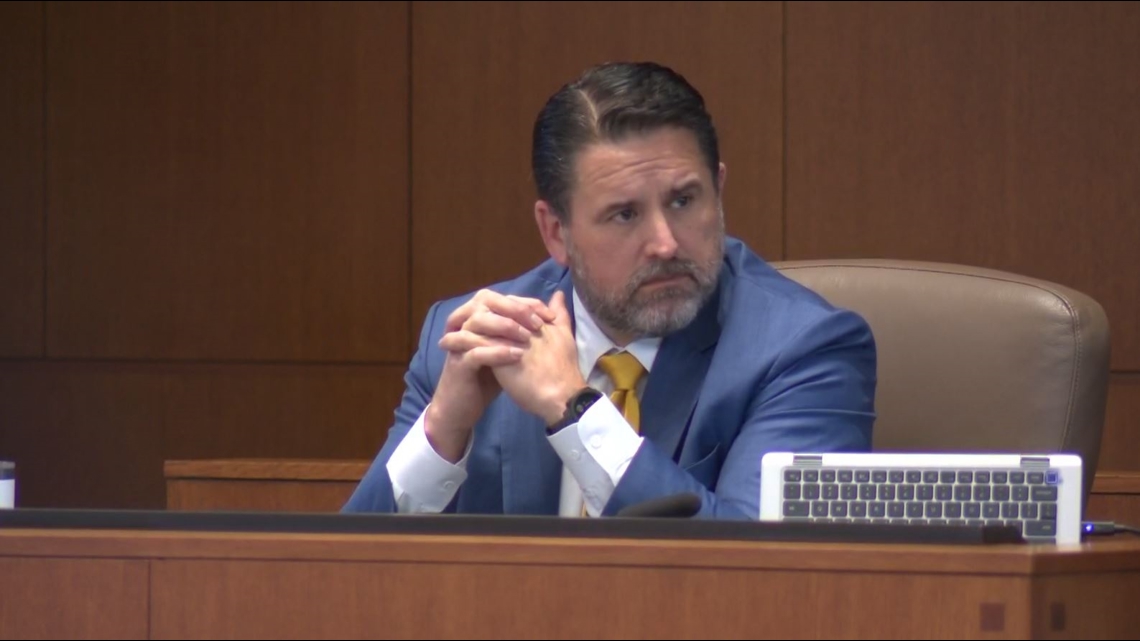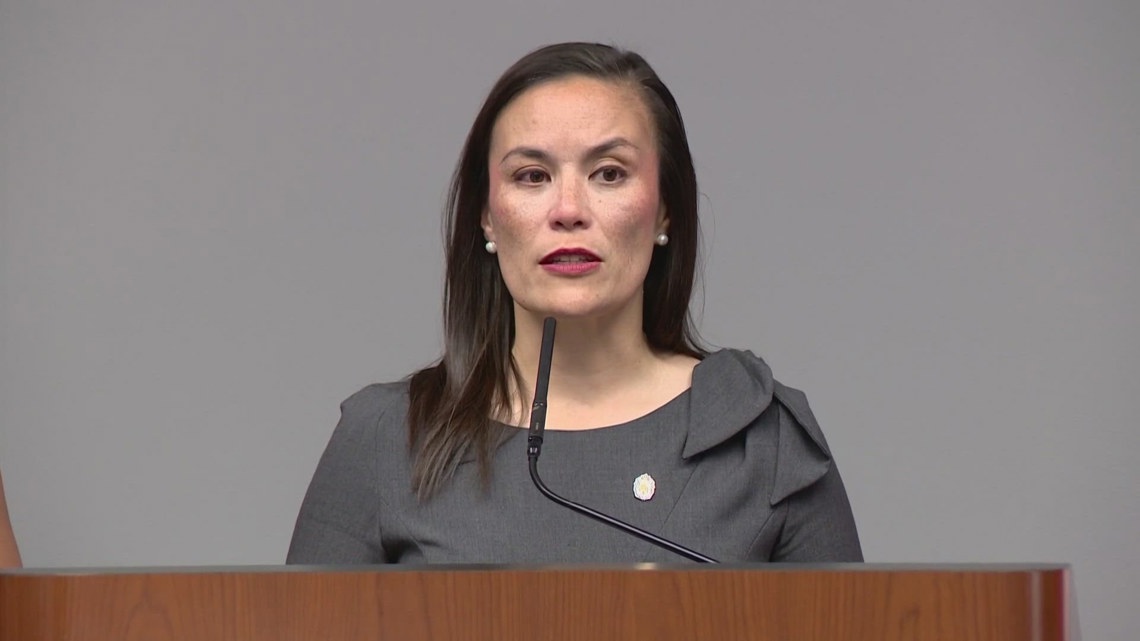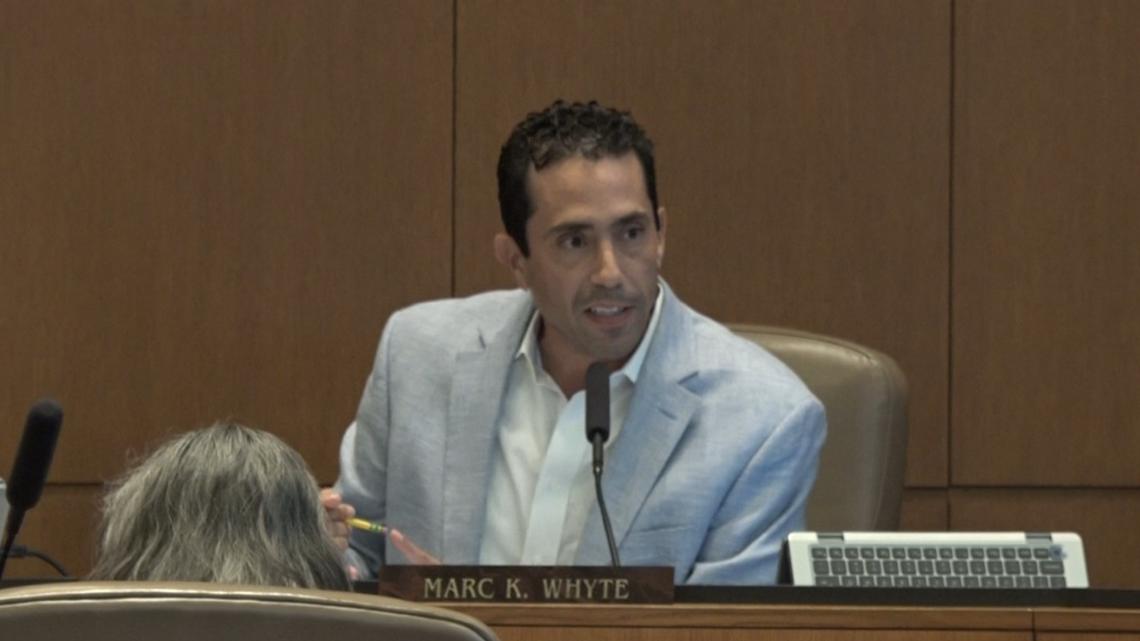As San Antonio City Council pushes back against the option of a property tax increase to address a looming deficit, they must consider where else to cut from.
SAN ANTONIO — With annual budget deliberations kicked into gear and the City of San Antonio contending with the reality of a $172.6 million deficit by 2027, city staff last week presented council members with a trio of potential strategies to mitigate the shortfall—including potentially raising the property tax rate by 3.5%, the state-mandated maximum.
At the outset of the weekslong budget process, several City Council were firm in their response to that option: They don’t want to see it implemented.
“Scenario 3 is an absolute non-starter,” said District 10 City Councilman Marc Whyte, referring to the option that proposes raising property taxes, hiking city fees and incorporating city department reductions to the tune of tens of millions of dollars in order to balance the city’s budget.
Council members Phyllis Viagran, Misty Spears and Marina Alderete Gavito joined Whyte as the council leaders most adamant in their opposition to raising property taxes.
“Raising property taxes is never a popular choice,” said Alderete Gavito, who represents District 7. “We must avoid that.”
Viagran said the forecasted deficit figure for 2027 “makes me gasp.”
In presenting the options, City Manager Erik Walsh acknowledged the difficult financial reality the city finds itself in, saying San Antonio “has not raised the city’s tax rate since I was in college.”


Friday’s conversation marked the formal beginning of annual budget conversations, which are expected to culminate in City Council eventually approving a Fiscal Year 2026 budget in mid-to-late September.
How that budget looks and where city leaders decide to reduce remains to be seen. But Walsh said tough decisions are all but necessary with the city currently facing twin deficits of $20.8 million for 2026 and $151.8 million in 2027.
“Obviously, in accordance to our current financial position, we are going to have to reduce expense no matter what we do,” he said.
The city’s options
The three strategies presented to City Council by Walsh and his team take an increasing number of paths to tackling the forecasted deficit, which Walsh said was exacerbated by city revenues growing slower than usual.
Scenario 1, as presented on Friday, goes heavy on cutting from city departments and addressing “inefficiencies,” to the tune of $45 million for next year and more than $127 million the year after.
Scenario 2 involves a smaller amount of department reductions to go along with setting aside nearly $60 million in CPS Energy payments to the city for deficit mitigation, while also creating an additional $4 million over the next two years through city fee hikes.
Scenario 3 incorporates an even smaller amount of department reductions ($43.3 million by 2027) as well as the same allotment of CPS Energy payments, city fee raises and higher property taxes.
“We are projecting revenues to grow at 1% and expenses right now to grow at 3.5%,” Walsh said. “So there’s about a $97.4 million (number) that is, what we are referencing, the imbalance.”
He added that next year’s budget should put the city “on a path to manage that structural imbalance and get us on a path of de-escalation in terms of that gap.”
What to prioritize?
But the need to mitigate the imbalance, leaders said, is balanced out by the need to continue servicing San Antonians and funding key departments. That’s one of the two “guiding principles” the city’s budget team laid out in their efforts (along with minimizing the impact to vulnerable parts of the community and minimizing long-term risk).
It was also a theme repeated Friday by City Council members who said they didn’t want “core services” targeted as a way to address the budget deficit.
“When I say, ‘Erik, we need you to shake all the other buckets of money to get these things done,’ it is because we cannot – the services that so many in our community rely on – we cannot cut those without having said, ‘We’ve done our due diligence,'” said Mayor Gina Ortiz Jones, overseeing her first annual budget conversations as mayor, following a campaign where she touted the necessity for making smart investments.


Public safety and infrastructure were among those must-fund items most often cited by council members during the conversations. District 1 Councilwoman Sukh Kaur said “we just don’t have a great solution” for prioritizing and addressing street and sidewalk maintenance.
“It needs intentionality,” she emphasized.
Meanwhile, Spears, the newly elected District 9 representative, referenced the June 12 flash flooding tragedy when discussing her support for funding infrastructure, saying the weather event that took 13 lives “highlights that we cannot wait for bonds.”
Services for veterans, addressing construction delays, shoring up SAPD ranks and a lack of hospitals in some parts of the city were also contributed by council members as potential items to find money for.
Alderete Gavito put the challenge set forth by the budget deficit into stark relief when she said city leaders are “stuck between a rock and a hard place.”
“To me it’s crucial that we prioritize the functions that only a city can do,” she said. “Addressing homelessness, fire and police services, infrastructure and ACS are top priorities to folks.”
The District 7 council member was referencing the survey conducted earlier this year by the national research firm ETC Institute which found that, in shaping next year’s budget, residents want their leaders to prioritize services for the homeless community, cleaning up homeless camps, streets upkeep, affordable housing and Animal Care Services.
Nearly 1,200 Alamo City residents participated in that survey, which an ETC representative said was crafted so as to produce a collection of responses that reflected city demographics.


“When we look at allocating our citizens’ tax dollars, we need to look at how do we most directly and positively impact our citizen’s everyday lives?” said Whyte, who said he supported Scenario 1 to balance the budget.
Whyte, in addition to policing and infrastructure, said he also supporting funding homeless encampment sweeps in the next budget. District 2 Councilman Jalen McKee-Rodriguez, however, challenged the notion that sweeps are an adequate solution, saying most of the time they’ll just end up across the street.
“Until we are adequately addressing the intersections of our house crisis, our mental health crisis, and the crisis of generational poverty, there will be people living in drainage ditches, underpasses, abandoned properties and anywhere they can find shelter,” he said, adding that he’d like to see a clearer definition of what constitutes a “core service” in the budget team’s eyes.
The budget process comes as the city continues planning for Project Marvel, its dream of an ambitious downtown sports and entertainment district anchored by a downtown Spurs arena.
Jones appeared to reference Project Marvel when she asked Walsh to look into where else the city could address the budget deficit, including “delaying certain projects.”
District 5 City Councilwoman Teri Castillo addressed the multibillion-dollar elephant in the room more explicitly, saying her constituents on the historic west side have inquired about the “parallel” discussions of Project Marvel and a budget deficit.
“That’s something, in preparation for the budget town halls, I hope you all can answer,” she said to the budget team.
What’s next?
Fiscal Year 2026 begins Oct. 1, and City Council is expected to vote on and adopt a new budget on Sept. 18.
For now, the ball is in the hands of Walsh and the budget team, who will prepare a proposed budget and present it to council on Aug. 14. A series of citywide budget town halls and workshops will follow before leader refine it ahead of the Sept. 18 deadline.
